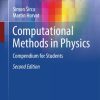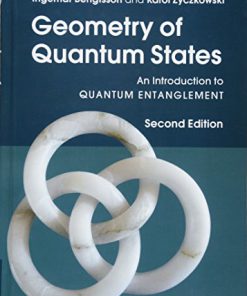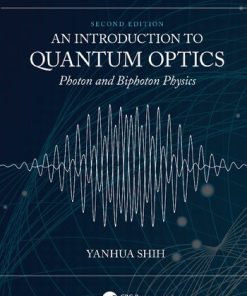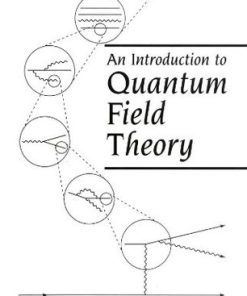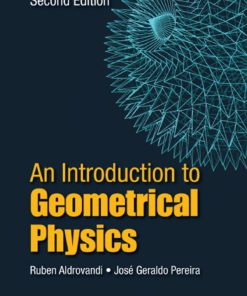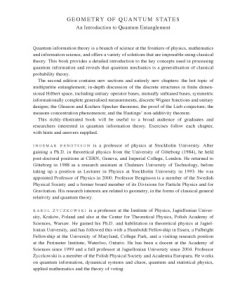An Introduction to Quantum Physics 1st Edition by Anthony French, Edwin Taylor 0748740789 9780748740789
$50.00 Original price was: $50.00.$25.00Current price is: $25.00.
An Introduction to Quantum Physics 1st Edition by Anthony P. French, Edwin F. Taylor – Ebook PDF Instant Download/DeliveryISBN: 0748740789, 9780748740789
Full download An Introduction to Quantum Physics 1st Edition after payment.
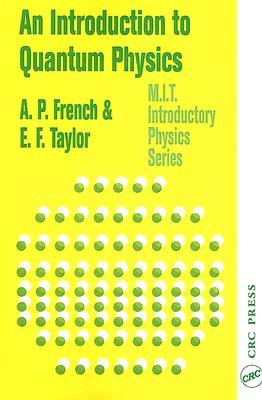
Product details:
ISBN-10 : 0748740789
ISBN-13 : 9780748740789
Author: Anthony P. French, Edwin F. Taylor
Provides comprehensive coverage of all the fundamentals of quantum physics. Full mathematical treatments are given. Uses examples from different areas of physics to demonstrate how theories work in practice. Text derived from lectures delivered at Massachusetts Institute of Technology.
An Introduction to Quantum Physics 1st table of contents:
1 Simple models of the atom
1-1 Introduction
1-2 The classical atom
1-3 The electrical structure of matter
1-4 The Thomson atom
1-5 Line spectra
1-6 Photons
1-7 The Rutherford-Bohr atom
1-8 Further predictions of the Bohr model
1-9 Direct evidence of discrete energy levels
1-10 X-ray spectra
1-11 A note on x-ray spectroscopy
1-12 Concluding remarks
EXERCISES
2 The wave properties of particles
2-1 De Broglie’s hypothesis
2-2 De Broglie waves and particle velocities
2-3 Calculated magnitudes of De Broglie wavelengths
2-4 The Davisson-Germer experiments
2-5 More about the Davisson-G ermer experiments
2-6 Further manifestations of the wave properties of electrons
2-7 Wave properties of neutral atoms and molecules
2-8 Wave properties of nuclear particles
2-9 The meaning of the wave-particle duality
2-10 The coexistence of wave and particle properties
2-11 A first discussion of quantum amplitudes
EXERCISES
3 Wave-particle duality and bound states
3-1 Preliminary remarks
3-2 The approach to a particle-wave equation
3-3 The Schrodinger equation
3-4 Stationary states
3-5 Particle in a one-dimensional box
3-6 Unique energy without unique momentum
3-7 Interpretation of the quantum amplitudes for bound states
3-8 Particles in nonrigid boxes
3-9 Square well of finite depth
3-10 Normalization of the wave function
3-11 Qualitative plots of bound-state wave functions
EXERCISES
4 Solutions of Schrodinger’s equation in one dimension
4-1 Introduction
4-2 The square well
4-3 The harmonic oscillator
4-4 Vibrational energies of diatomic molecules
4-5 Computer solutions of the Schrodinger equation
EXERCISES
5 Further applications of Schrodinger’s equation
5-1 Introduction
5-2 The three-dimensional Schrodinger equation
5-3 Eigenfunctions and eigenvalues
5-4 Particle in a three-dimensional box
5-5 Spherically symmetric solutions for hydrogen-like systems
5-6 Normalization and probability densities
5-7 Expectation values
5-8 Computer solutions for spherically symmetric hydrogen wave functions
EXERCISES
6 Photons and quantum states
6-1 Introduction
6-2 States of linear polarization
6-3 Linearly polarized photons
6-4 Probability and the behavior of polarized photons
6-5 States of circular polarization
6-6 Orthogonality and completeness
6-7 Quantum states
6-8 Statistical and classical properties of light
6-9 Concluding remarks
APPENDIX: POLARIZED LIGHT AND JTS PRODUCTION
6A-1 The production of linearly polarized light
6A-2 The production of circularly polarized light
Suggested experiments with linearly polarized light
EXERCISES
7 Quantum amplitudes and state vectors
7-1 Introduction
7-2 The analyzer loop
7-3 Paradox of the recomhined beams
7-4 Interference effect in general
7-5 Formalism of projection amplitudes
7-6 Properties of projection amplitudes
7-7 Projection amplitudes for states of circular polarization
7-8 The state vector
7-9 The state vector and the Schrodinger wave function for bound states
EXERCISES
8 The time dependence of quantum states
8-1 Introduction
8-2 Superposition of states
8-3 An example of motion in a box
8-4 Packet states in a square-well potential
8-5 The position-momentum uncertainty relation
8-6 The uncertainty principle and ground-state energies
8-7 Free-particle packet states
8-8 Packet states for moving particles
8-9 Examples of moving packet states
8-10 The energy-time uncertainty relation
8-11 Examples of the energy-time uncertainty relation
8-12 The shape and width of energy levels
EXERCISES
9 Particle scattering and barrier penetration
9-1 Scattering processes in terms of wave packets
9-2 Time-independent approach to scattering phenomena
9-3 Probability density and probability current
9-4 Scattering by a one-dimensional well
9-5 Barrier penetration: tunneling
9-6 Probability current and barrier penetration problems
9-7 An approximation for barrier penetration calculations
9-8 Field emission of electrons
9-9 Spherically symmetric probability currents
9-10 Quantitative theory of alpha decay
9-11 Scattering of wave packets
EXERCISES
10 Angular momentum
10-1 Introduction
10-2 Stern-Gerlach experiment: theory
10-3 Stern-G erlach experiment: descriptive
10-4 Magnitudes of atomic dipole moments
10-5 Orbital angular momentum operators
10-6 Eigenvalues of Lz
10-7 Simultaneous eigenvalues
10-8 Quantum states of a two-dimensional harmonic oscillator
EXERCISES
11 Angular momentum of atomic systems
11-1 Introduction
11-2 Total orbital angular momentum in central fields
11-3 Rotational states of molecules
11-4 Spin angular momentum
11-5 Spin orbit coupling energy
11-6 Formalism for total angular momentum
APPENDIX: THE SCHRODINGER EQUATION IN SPHERICAL COORDINATES
EXERCISES
12 Quantum states of three-dimensional systems
12-1 Introduction
12-2 The Coulomb model
12-3 General features of the radial wave functions for hydrogen
12-4 Exact radial wave functions for hydrogen
12-5 Complete Coulomb wave functions
12-6 Classification of energy eigenstates in hydrogen
12-7 Spectroscopic notation
12-8 Fine structure of hydrogen energy levels
12-9 Isotopic fine structure: heavy hydrogen
12-10 Other hydrogen-like systems
EXERCISES
13 Identical particles and atomic structure
13-1 Introduction
13-2 Schrbdinger’s equation for two noninteracting particles
13-3 The consequences of identity
13-4 Spin states for two particles
13-5 Exchange symmetry and the Pauli principle
13-6 When does symmetry or antisymmetry matter?
13-7 Measurability of the symmetry character
13-8 States of the helium atom
13-9 Many-electron atoms
13-10 General structure of a massive atom
EXERCISES
14 Radiation by atoms
14-1 Introduction
14-2 The classical Hertzian dipole
14-3 Radiation from an arbitrary charge distribution
14-4 Radiating dipoles according to wave mechanics
14-5 Radiation rates and atomic lifetimes
14-6 Selection rules and radiation patterns
14-7 Systematics of line spectra
14-8 Angular momentum of photons
14-9 Magnetic dipole radiation and galactic hydrogen
14-10 Concluding remarks
People also search for An Introduction to Quantum Physics 1st:
an introduction to quantum physics ap french
an introduction to quantum physics french
an introduction to quantum physics garrison sposito
an introduction to quantum physics by stefanos trahanas
an introduction to quantum physics trachanas
Tags: Introduction, Quantum Physics, Anthony French, Edwin Taylor
You may also like…
Computers - Computer Science
A First Introduction to Quantum Computing and Information Bernard Zygelman
Physics - Solid State Physics
Physics - Quantum Mechanics
Physics - Relativity
An Introduction to Geometrical Physics 2nd Edition by Ruben Aldrovandi 9813146839 9789813146839
Science (General)
Geometry of Quantum States an Introduction to Quantum Entanglement Ingemar Bengtsson



